Training for a world record requires grit. Many may approach the challenge preparation by continually pushing for more “burn.” But there is another effective, sustainable, and arguably superior way. Training to avoid (or at least delay) the unfavourable internal conditions that lead to failure or reduced performance. And it doesn’t just work to break records.
In April 2017 I had a crazy idea. I was going to attempt to beat the Guinness World Record for ‘Heaviest Weight Lifted by Kettlebell Swing in One Hour’ by a woman.
I was organising a charity event to raise money for the MS Society, as my dad suffers severely from the illness, and thought a world record attempt would help with fundraising. After all, “strength has a greater purpose.”
The rules specified by Guinness were simple: only two-arm swings were acceptable, with hips and knees fully extended at lockout and arms at least parallel to the floor. On the downswing, the kettlebell “must go beyond the participant’s knees when they reach the squat position.” Clearly, their rules are different than at StrongFirst, but our standard-meeting swing would meet their requirements. The current female record stood at 20,816kg.
Since I used swings in many of my training sessions, I considered myself to be well-conditioned. While I knew it would be challenging, I felt confident that I could beat the current record. My belief was quickly tested when I began training.
Setting Goals and Making Decisions
My attempt would take place in July 2017; I had three months and many decisions to make. I decided to use the same size bell for the duration of the attempt. Swinging a 32kg bell was normal for me, but I figured my grip would fatigue after multiple sets. Instead, I opted for 24kg as this was my ‘comfortable’ bell.
I would aim for 1,000 hardstyle swings in the hour (24,000kg in total). I knew this would be a challenge but seemed achievable with consistent training. Swinging 20 reps each minute on the minute (EMOTM) for 50 of the minutes would get me 1,000 swings. Nearer the time I would decide how I was going to use the remaining 10 minutes’ rest.
I started by testing where I was at: I managed 15 swings with 24kg on the minute for 25 minutes (375 swings; 9,000kg). It was tough—much harder than I thought it would be, especially on my grip. By the end, I struggled to hold on to the kettlebell. It suddenly became apparent just how much practice I would have to do and how smartly I would need to train.
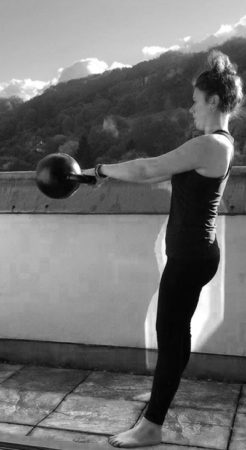
To succeed, I needed to focus on improving three areas: my endurance, my power, and my grip. After my baseline session, I also realised how much of a mental challenge this was going to be. So I decided to keep training simple and focussed on the goal.
Plan and Perform: Endurance and Power
I programmed three sessions per week, focussing on either endurance or power using Strong Endurance™ anti-glycolytic principles: “to train to avoid (or at least delay) the unfavourable internal conditions that lead to failure or reduced performance.”
The key point when following this type of training is it shouldn’t be strenuous. While that might sound counterintuitive, it is common throughout Russian programs (that have produced countless champions). Each rep should be a repeat of the first strong, powerful rep. If you are training and start to lose power or form, lose the ability to breathe normally and recover in rest periods, or start to feel “the burn,” you must stop. This is not negotiable.
Those signs indicate you are building up metabolic waste faster than you can deal with it. Anti-glycolytic principles suggest avoiding this as much as possible in order to target the oxidative system, which has far greater endurance than our short-term energy sources. My goal was to spend as much of the record attempt avoiding energy debt, so my power output didn’t drop.
I based my higher volume endurance sessions around using a lighter bell, either 18kg or 20kg, aiming for 15–20 reps EMOTM, starting with 25 minutes.
I also included some one-arm swings as part of my endurance training. Although I couldn’t use them during my record attempt, I knew they would strengthen my grip. I had originally included farmer’s walks in the program but soon found the one-arm swings were actually more useful.
For my power sessions, I used a heavier bell, either 28kg or 32kg. I aimed for 10–15 minutes to start with, capped at a maximum of 10 reps EMOTM.
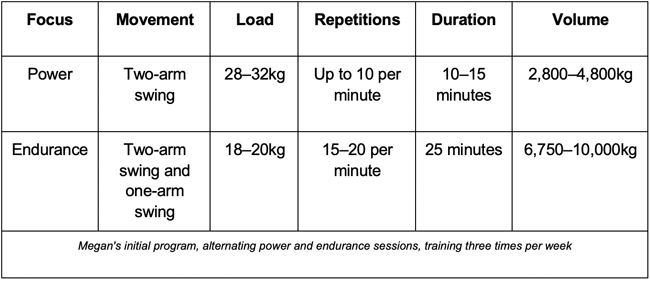
To get the training adaptation I needed, I was sure to follow Strong Endurance™ principles during both endurance and power sessions. If I couldn’t perform reps following those guidelines, I stopped.
Assess and Adjust
By June, training had gone well: my baseline endurance improved and I started to use the 24kg for my endurance sessions. My fitness felt good and I wasn’t losing power despite the weight increase. However, I quickly became aware that I wasn’t going to be able to do 20 swings on the minute for a prolonged period with the 24kg. My grip still wasn’t strong enough to hold the kettlebell for that many reps over a longer period of time and I was beginning to struggle after around 20 minutes. My forearms began to burn—a big no-no.
So I went back to the drawing board to test different rep ranges. 10 swings every 30 seconds worked best. This way I was still hitting 20 reps per minute, but the 15 seconds or so between sets was allowing my grip to recover. Mid-June, I performed 700 swings (16,800kg) in 35 minutes fairly easily following this structure.
My final training session before the record attempt lasted 50 minutes. I wanted to replicate the time I’d be swinging for but with reduced rep volume. I did a very easy 15 swings EMOTM using the 24kg bell and without ripping my hands (something I’d been very careful to avoid throughout training).
Mind Games
In terms of overcoming the mental challenge, every night before I went to sleep I spent 10 minutes visualising the last 10 minutes of the record attempt. How would I be feeling physically in those last 10 minutes? What would I be thinking? How painful could my hands be?
One big thing to take from this is: if you believe you can, then you can. In the times I felt like giving up, what kept me going most was the knowledge that I was able to even attempt something like this when many other people—like my dad—would give anything just to be able to walk. I was lucky enough to have a strong, healthy body. I was going to use it.
The Big Day
I was extremely nervous, but as we had already raised over £4,000 (approximately US$5,000) for the MS Society, I was determined to beat the record. I felt physically and mentally prepared and, in my mind, there was no way I was going to fail.
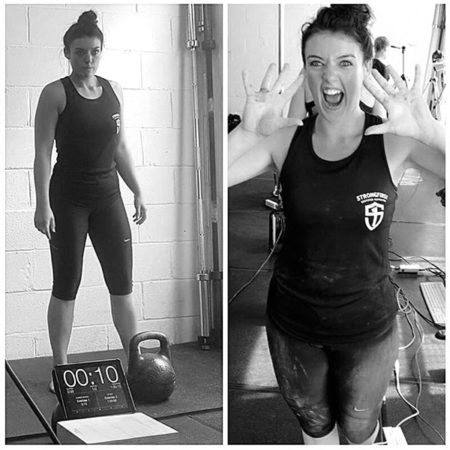
The first 45 minutes weren’t so bad and everything was going to plan. Then, with 15 minutes to go, my right hand tore badly—I still have the scar. That didn’t stop me and I kept going to the end. I now know the true definition of blood, sweat, and tears.
In total, I performed 1,012 swings in the hour, of which 989 were adjudged to meet Guinness standards. The bell I used was officially weighed at 24.1kg, giving me a total of 23,834.9kg. I had beaten the existing record by over 3,000kg!
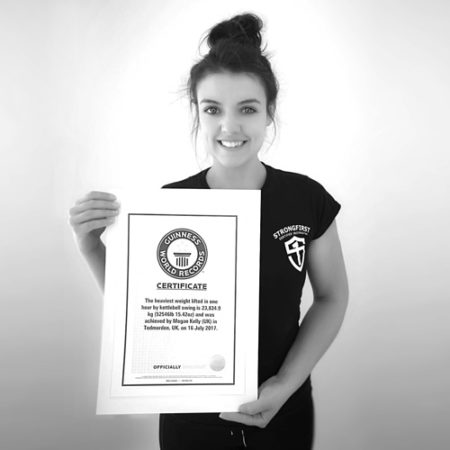
There was nothing complicated about my program and I’m not special. The keys to my success were intelligent and sustainable programming, hard work, consistency, and the determination that comes from knowing “strength has a greater purpose.”
World’s #1 kettlebell program for beginners and beyond
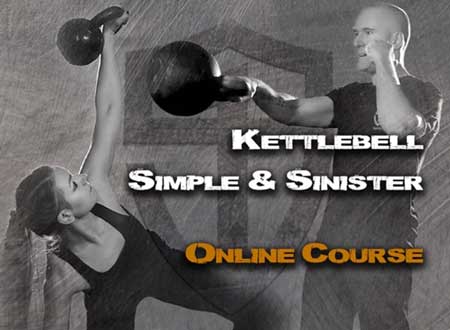
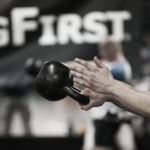
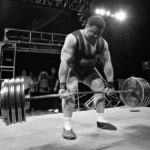
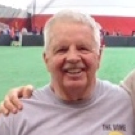

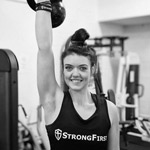

Fantastic effort and such an intelligent breakdown of how to achieve the record. Now will you seek to improve it.
Outstanding achievement!
Thank you very much!
Congratulations. This is excellent. I have a question about the record attempt.
Did they allow you to switch kettlebells in the middle of the attempt?
Hi Kyle
Thank you very much!
Yes, Guinness World Records did allow a change of bell size throughout the hour. However I decided to stick to the 24kg throughout as I didn’t want to start heavier and then fatigue my grip. I also didn’t want to go lighter than the 24kg as it wouldn’t have allowed me to beat the previous record. Hope that helps and thanks for reading!
Thank you for sharing, Megan, well done!
Great article, very much inspiring to action.
Especially liked the breakdown of all your programming reassessments and adjustments, and commitment to keep to the anti-glycolytic standard. It took real patience, strength of character and perseverance and to me that was the most inspiring part.
All the best in your future endeavours!
Kat
Hi Kat
Thank you so much for reading and for your comments! So glad you enjoyed the article 🙂
Inspiring. Well done and thanks for sharing your experience.
Thank you very much and I’m glad you enjoyed the article!
Great job Megan – and a great cause!
How did your dad react when he found out you were a record holder in his honour?!
Thank you so much!
Initially he asked if he could go on a round the world cruise with the money everyone had raised…! 😉 When I explained it was going to the MS Society and that I’d beaten a World Record as part of the fundraising, he couldn’t believe it and he was very emotional!
Ha ha can’t beat that sense of humour!
That’s great – looking forward to hearing about your next accomplishment 🙂
Definitely!
Thank you very much and thanks for reading! 😀
Wow, awesome job!!! I like the way you tested yourself, trained, adjusted when needed, and dug deep to get the job done when it was time. Inspiring. Thanks for this article!
Hi Anna, thank you very much! Glad you enjoyed reading it!
inspiring!!!
All the best to your dad!
did you do any other exercises during this time-frame?
Hi Sergej, thank you very much and great question! Yes I did do other exercises in this time period – I didn’t actually have to change my other training too much because following a program based around Strong Endurance principles meant that I wasn’t massively fatiguing.
One thing I did do was take deadlifts out of my training as I found the deadlifts were making swinging that volume more difficult but I found my deadlift had actually increased when I went back to it.
My warm up for each swing session included goblet squats and 20kg/24kg Turkish get ups.
I continued to train pull ups by greasing the groove, either on days I wasn’t swinging or before a power swing day.
I also continued to train kettlebell military press and kettlebell front squat.
Ok.
Thank you for answering.
Seems like a minimalistic but very well-rounded approach.
And the whole experience sounds really interesting.
I’m looking forward to try something similar but with lower volume.
Thank you for this inspiration!
And thank you for the question and your comments. Yes I wanted to continue training other lifts and because following Strong Endurance principles meant that I wasn’t getting much fatigue, I was able to do this.
Great! Let me know how you get on with it, I’d be really interested to know!
You’re very welcome, thank you for reading!